Are you tired of your dull, cracked floors? Worried about finding a solution that is both durable and aesthetically pleasing Look no further! This article will introduce you to the wonders of epoxy floor paint and how it can transform your space. Say goodbye to boring and hello to beautiful with just a coat of paint.
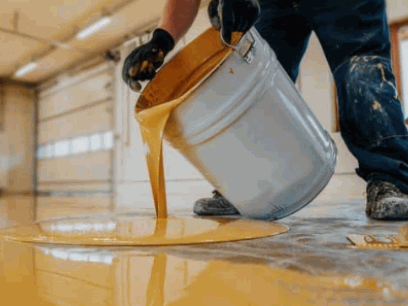
What Is Epoxy Floor Paint?
Epoxy floor paint is a specialized coating that is applied to concrete floors to create a strong and long-lasting finish. It consists of a two-part epoxy resin that, when combined, triggers a chemical reaction that produces a durable and sturdy surface. This type of paint is frequently utilized in industrial and commercial environments due to its ability to resist chemicals, stains, and abrasions. Epoxy floor paint is also renowned for its excellent adhesion to concrete and its ability to provide a sleek and glossy appearance. It is a popular option for garage floors, warehouses, and factories.
Learn more: How To Make Epoxy Floor Design
How Does Epoxy Floor Paint Work?
Epoxy floor paint is a durable and versatile coating that is specifically designed to protect and enhance concrete floors. To better understand how it works, here are the steps involved in the application process:
- Surface Preparation: The first step is to thoroughly clean and prepare the concrete surface by removing any dirt, oil, or existing coatings.
- Mixing: Next, the epoxy resin and hardener must be mixed together in accordance with the manufacturer’s instructions.
- Application: The epoxy mixture is then applied to the floor using a roller or brush, ensuring that it is evenly spread across the entire surface.
- Curing: The epoxy must be allowed to cure and harden, which typically takes around 24-48 hours.
- Protection: Once fully cured, the epoxy creates a tough and protective layer that is resistant to stains, chemicals, and abrasion.
- Enhancement: Epoxy floor paint offers the opportunity to customize the appearance of the floor with a variety of colors, textures, and finishes.
By following these steps, epoxy floor paint can effectively create a long-lasting and visually appealing flooring solution for a variety of spaces, including homes, garages, and warehouses.
What Are The Benefits Of Using Epoxy Floor Paint?
Epoxy floor paint has become a popular choice for covering concrete floors in both homes and commercial spaces. But what makes it stand out from other flooring options? In this section, we will discuss the benefits of using epoxy floor paint, including its durability, chemical resistance, and easy maintenance. We will also explore how this type of flooring can enhance the aesthetic appeal of any space. So, let’s dive in and discover the advantages of using epoxy floor paint for your flooring needs.
1. Durability
Durability is one of the key benefits of using epoxy floor paint. To ensure maximum durability, follow these steps when applying epoxy floor paint:
- Surface Preparation: Thoroughly clean and prepare the floor by removing any dirt, grease, or existing coatings.
- Mixing the Epoxy Floor Paint: Follow the manufacturer’s instructions to properly mix the epoxy paint and any accompanying hardeners or activators.
- Application Techniques: Apply the epoxy paint evenly using a roller or brush, ensuring complete coverage and avoiding puddles or streaks.
By following these steps, you can enhance the durability of your epoxy floor paint and enjoy long-lasting results.
2. Chemical Resistance
Epoxy floor paint is highly resistant to chemicals, making it a perfect choice for industrial and commercial environments. To ensure its effectiveness, follow these steps when applying epoxy floor paint:
- Surface Preparation: Thoroughly clean and prepare the floor by removing any dirt, oil, or existing coatings.
- Mixing the Epoxy Floor Paint: Follow the manufacturer’s instructions to properly mix the epoxy components.
- Application Techniques: Use a roller or brush to apply the epoxy paint, ensuring even coverage and following the recommended thickness.
By following these steps, you can greatly enhance the chemical resistance of your epoxy floor paint, providing a durable and long-lasting solution for your flooring needs. Remember to wear appropriate safety gear and consult professionals for specific application instructions.
3. Easy To Clean
- Remove loose debris: Sweep or vacuum the floor to eliminate any loose dirt, dust, or debris.
- Prepare cleaning solution: Mix a mild detergent or epoxy-specific cleaner with water.
- Mop or scrub the floor: Apply the cleaning solution to the floor using a mop or scrub brush, working in small sections.
- Let it sit: Allow the cleaning solution to sit on the floor for a few minutes to break down any stubborn stains or spills.
- Scrub or use a floor scrubber: Use a scrub brush or floor scrubber to agitate the solution and remove dirt or stains.
- Rinse with clean water: Thoroughly rinse the floor with clean water to remove any residue from the cleaning solution.
- Dry the floor: Use a dry mop or towels to completely dry the floor before walking on it again.
Epoxy floor paint is known for its easy-to-clean properties, making it a popular choice for various applications. Here are the steps to effectively clean epoxy floor paint:
By following these steps, you can easily maintain the cleanliness and appearance of your epoxy floor paint.
4. Aesthetically Pleasing
Epoxy floor paint not only provides durability and chemical resistance but also offers an aesthetically pleasing finish. Its smooth and glossy appearance can completely transform the look of any space, making it visually appealing. The high shine of the paint enhances the brightness of the area, reflecting light and creating an illusion of a larger room.
Moreover, epoxy floor paint comes in a wide range of colors and finishes, making it customizable to suit any design preference. For instance, one of our recent customers used metallic epoxy floor paint in their garage to achieve a stunning marbled effect, elevating their once dull space into a captivating showroom.
What Are The Different Types Of Epoxy Floor Paint?
When it comes to choosing the right epoxy floor paint for your project, there are several options available. Each type of epoxy floor paint offers unique benefits and is suitable for different applications. In this section, we will discuss the different types of epoxy floor paint, including water-based, solvent-based, and 100% solids. By understanding the characteristics of each type, you can make an informed decision on which one is best for your specific needs.
1. Water-Based Epoxy Floor Paint
Water-based epoxy floor paint is a popular choice for its ease of use and environmental friendliness. Follow these steps to properly prepare and apply water-based epoxy floor paint:
- Begin by thoroughly cleaning the surface, and removing any dirt or debris.
- Repair any cracks or damage to the floor before proceeding.
- Etch the surface with an acid solution to promote adhesion.
- Mix the water-based epoxy floor paint according to the manufacturer’s instructions.
- Using a roller or brush, apply the paint starting from one corner and working your way out.
- Allow the paint to dry completely before applying a second coat if desired.
- Ensure proper ventilation during the drying process.
- In case of any spills or drips, clean them up immediately.
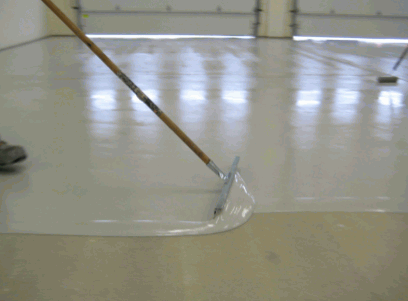
2. Solvent-Based Epoxy Floor Paint
Solvent-based epoxy floor paint is a popular option for its durability and chemical resistance. Here are the steps to prepare and apply solvent-based epoxy floor paint:
- Clean the surface thoroughly, removing any dirt, grease, or previous coatings.
- Mix the two components of the epoxy paint according to the manufacturer’s instructions.
- Apply the paint using a roller or brush, starting from one corner and working your way toward the exit.
- Allow the first coat to dry completely before applying a second coat to ensure a smooth and even finish.
Pro-tip: Before applying the solvent-based epoxy floor paint, ensure good ventilation in the area and use appropriate personal protective equipment to avoid inhalation of fumes.
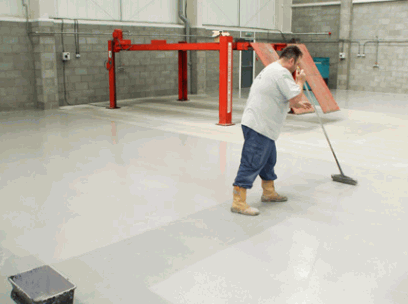
3. 100% Solids Epoxy Floor Paint
100% solids epoxy floor paint is a high-performance coating that offers exceptional durability and chemical resistance. Here are the steps to effectively apply this type of paint:
- Prepare the surface by thoroughly cleaning and repairing any damage.
- Mix the epoxy components thoroughly, following the manufacturer’s instructions.
- Apply the paint using a roller or brush, starting from one corner and working your way toward the exit.
- Allow the first coat to dry completely before applying a second coat for added strength.
- Finish by applying a topcoat to enhance the appearance and protect the epoxy.
Pro-tip: To achieve a flawless finish, ensure proper ventilation and follow the recommended curing time before subjecting the floor to heavy traffic or chemical exposure.
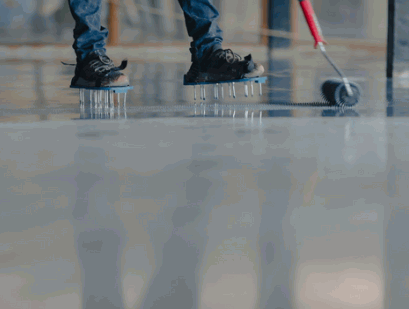
Is It Safe To Use Epoxy Floor Paint?
When using epoxy floor paint, it is important to take proper precautions to ensure safety. This includes following the manufacturer’s instructions for application and using the paint in well-ventilated areas. Epoxy paint contains chemicals that can be harmful if inhaled or come into contact with skin, so wearing protective gear, such as gloves and a mask, is highly recommended. It is also essential to allow the paint to fully cure before exposing it to heavy traffic or water. Overall, if used correctly and with the necessary safety measures, epoxy floor paint can be a secure and long-lasting flooring option.
How To Prepare And Apply Epoxy Floor Paint?
Before diving into the process of applying epoxy floor paint, it is crucial to properly prepare the surface. This section will guide you through the steps of surface preparation, ensuring a smooth and long-lasting finish. Once the surface is ready, we will discuss the correct way to mix the epoxy floor paint, as the proper ratio is essential for a successful application. Finally, we will cover various techniques for applying the paint, so you can achieve the best results for your specific project. Let’s get started on creating a durable and beautiful epoxy floor.
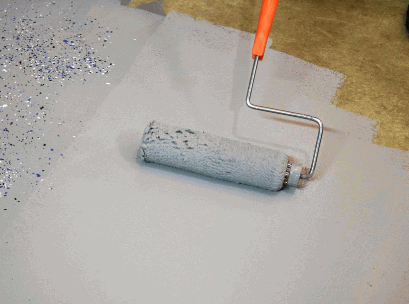
1. Surface Preparation
Proper surface preparation is crucial for a successful application of epoxy floor paint.
- Clean the surface thoroughly by removing any dirt, dust, grease, or stains.
- Repair any cracks, chips, or imperfections on the surface using suitable materials.
- Etch the surface using either acid etching or mechanical abrasion to create a rough texture for better adhesion.
- Remove any etching residue and rinse the surface with water.
- Allow the surface to dry completely before proceeding with the application.
- If necessary, apply a primer or sealer to enhance adhesion and prevent issues like moisture penetration.
- Follow the manufacturer’s instructions for mixing the epoxy floor paint and apply it evenly using suitable tools.
- Allow the paint to cure according to the recommended drying time before subjecting the surface to foot traffic or heavy use.
Since the 1950s, epoxy floor paint has been widely used in industrial and commercial applications due to its durability and resistance to chemicals. With advancements in technology, various types of epoxy floor paint have been developed, making it a popular choice for surfaces such as garages, warehouses, and hospitals.
2. Mixing The Epoxy Floor Paint
Mixing epoxy floor paint is an essential step in ensuring the proper application and effectiveness of the paint. Follow these steps:
- Gather materials: epoxy paint, hardener, a mixing container, and a stir stick.
- Read instructions: Carefully read the instructions provided by the manufacturer for the correct mixing ratio.
- Measure: Pour the required amount of epoxy and hardener into the mixing container.
- Mix thoroughly: Use the stir stick to combine the components until they are well blended. Scrape the sides and bottom of the container to ensure even mixing.
- Allow to rest: Let the mixture sit for a few minutes to allow any air bubbles to rise to the surface.
- Re-mix: After resting, gently stir the mixture again to remove any remaining air bubbles.
A true history: Epoxy floor paint was first used in commercial and industrial settings in the 1950s. It gained popularity due to its durability, chemical resistance, and easy maintenance. Over time, advances in technology have led to the development of various types of epoxy floor paint, allowing for greater customization and suitability for different applications. Today, epoxy floor paint is widely used in residential, commercial, and industrial spaces, providing a long-lasting and visually appealing flooring solution.
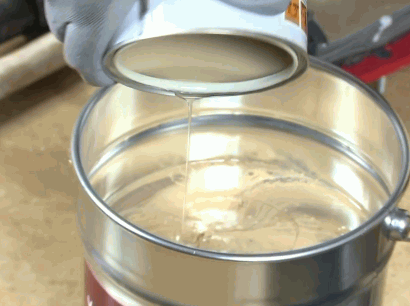
3. Application Techniques
When applying epoxy floor paint, it is essential to follow proper application techniques for the best results. Here is a list of steps to consider:
- Surface preparation: Thoroughly clean and degrease the floor, making sure it is free from dust, dirt, and any previous coatings.
- Mixing the epoxy floor paint: Follow the manufacturer’s instructions to properly mix the epoxy components.
- Application techniques: Use a roller, brush, or sprayer to evenly apply the epoxy, working in small sections. It is important to avoid over-application to prevent issues such as bubbling or uneven curing.
Following these steps will help ensure a successful application of epoxy floor paint, resulting in a durable and visually appealing finish.
What Are The Factors To Consider Before Using Epoxy Floor Paint?
Before deciding to use epoxy floor paint, there are several important factors to consider. Each surface and environment is unique, and it is essential to evaluate these elements before applying the epoxy. In this section, we will discuss the key factors to keep in mind: the type of surface, the expected traffic and usage, and the climate and temperature of the area. Understanding these factors will help you determine if epoxy floor paint is the right choice for your specific needs.
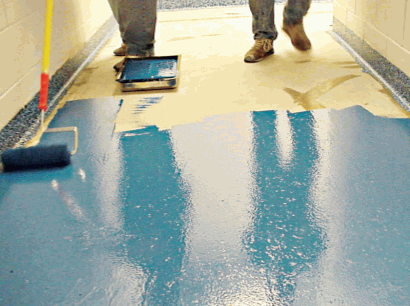
1. Type Of Surface
When considering using epoxy floor paint, it is important to assess the type of surface you will be applying it on. Different surfaces may require different preparation techniques for optimal results.
- Clean the surface thoroughly by removing any dirt, dust, or debris.
- Repair any cracks, chips, or uneven areas on the surface.
- Etch the surface using an acid-based etching solution to promote adhesion.
- Allow the surface to dry completely before applying the epoxy floor paint.
- Apply a primer coat to enhance adhesion and ensure even coverage.
- Mix the epoxy floor paint according to the manufacturer’s instructions.
- Apply the epoxy paint using a brush or roller, working in small sections.
- Allow the paint to cure according to the recommended drying time.
- Apply additional coats of epoxy paint if desired for added durability.
- Allow the final coat to cure completely before subjecting the surface to heavy traffic or use.
In history, epoxy floor paint was first developed in the 1920s and gained popularity in the industrial sector for its durability and chemical resistance. Over the years, advancements in technology have led to the development of various types of epoxy floor paint, making it a versatile choice for both commercial and residential applications.
2. Traffic And Usage
When considering the usage and traffic of epoxy floor paint, there are a few key factors to keep in mind:
- Assess the level of foot and vehicle traffic in the area where the paint will be applied.
- Consider the type of usage the floor will endure, such as heavy equipment or frequent movement of objects, when determining the appropriate epoxy floor paint.
- Evaluate the potential for spills or exposure to chemicals, as certain epoxy floor paints offer higher chemical resistance.
- Take into account the maintenance and cleaning requirements based on the anticipated usage.
- Consider the durability and longevity of the epoxy floor paint, ensuring it can withstand the expected traffic and usage over time.
3. Climate And Temperature
Climate and temperature are crucial factors to consider when selecting epoxy floor paint. Follow these steps for the best results:
- Check the specifications: It is important to ensure that the chosen epoxy floor paint is suitable for the climate and temperature conditions of your area.
- Temperature range: Verify the recommended temperature range for application and curing of the epoxy floor paint.
- Humidity levels: Take into account the humidity levels in your area, as high humidity can affect the curing process and result in a weaker bond.
- Surface temperature: Make sure that the surface temperature falls within the recommended range for proper adhesion and curing of the epoxy floor paint.
- Allow for acclimation: If the epoxy floor paint has been stored in a different temperature environment, allow it to acclimate to the room temperature before application.



